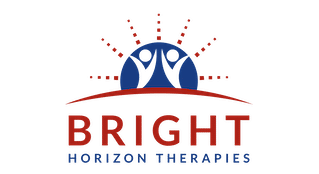Unhealthy relationships can show up in many shades of gray. Sometimes they’re subtle, making them hard to spot; other times, they’re obvious. Understanding toxic dynamics is the first step toward reclaiming your power and joy. In this post, I’ll share insights and strategies to navigate unhealthy relationships while keeping your well-being at the forefront.
I’ve had my fair share ofunhealthy relationships, whether with family, partners, or colleagues. They can be exhausting, draining, and, over time, steal your joy. This article is meant to support you in recognizing unhealthy patterns, protecting your boundaries, and making conscious choices that honor your emotional health.
Unhealthy Relationships as an opportunity to grow
While painful, unhealthy relationships can also be a chance for growth. They teach us about ourselves: what we want, what we don’t want, and what we need to heal.
In my own experiences, these relationships highlighted my sore spots—especially from childhood—and helped me learn to:
- Love and respect myself
- Set healthy boundaries
- Recognize patterns that I don’t want to repeat
Sometimes, unhealthy dynamics persist because of unresolved guilt or past wounds. Often, the person with manipulative behaviour is fully aware of your vulnerabilities and may use them to control or manipulate you.
Start your hero’s journey to manage unhealthy relationships
Being in an unhealthy relationship is hard—but it’s also a call to start your hero’s journey. Change can be scary, but without it, nothing shifts.
Take responsibility
Your journey begins by taking responsibility for what is yours in the relationship. Reflect on:
- Your emotions
- Your behaviours
- Your thoughts
- How you can transform them
This doesn’t excuse the other person’s toxic behaviour—it’s a boundary violation. You cannot control them; you can only manage your response.
Create self-awareness
Self-awareness means noticing difficult patterns within yourself. Ask yourself:
- Which parts struggle with setting boundaries?
- Which parts feel undeserving of respect?
- How can I care for these parts?
Healing is like peeling an onion. The more you understand your patterns, the better you manage them. Patience and self-compassion are essential here.
Explore your choices
Your hero’s journey includes exploring options:
- What behaviors have you tried?
- What worked or didn’t work?
- How do you feel after trying them?
If repeated interactions leave you drained, your boundaries may be violated. Reflect and take action to protect them.
Strategies for managing unhealthy relationships
1. Focus on Yourself
Stop ruminating on the toxic person. Instead, focus on yourself:
- What do you care about?
- Who supports you in your life?
- What activities bring you joy without them?
2. Change Your Behaviour
Adjusting your behaviour can influence unhealthy dynamics:
- Set healthy boundaries: Define what is and isn’t acceptable.
- Choose your battles: Focus on what matters and let go of less important conflicts.
- Limit communication: Keep conversations superficial if vulnerability could be exploited.
- Use self-preserving statements: Examples: “That is your opinion,” or “I disagree.”
3. Create a safety plan
If there’s any risk of physical harm, prioritize your safety. A safety plan is about protecting yourself—even if it conflicts with beliefs about loyalty or love.
4. Practice self-care
Self-care is essential in unhealthy relationships. Consider activities that nurture your emotional, mental, physical, and spiritual well-being—like walking in nature, meditation, or connecting with your inner self.
5. Find an ally
Having someone knowledgeable about toxic dynamics can help you navigate unhealthy relationships. Avoid people who might minimize or blame you—they can make things worse.
6. Gain clarity
Define the kind of relationships you want and evaluate if your current connections align. Decide what changes are possible and where you need to draw boundaries.
Takeaways
If you’re navigating toxic dynamics:
- Try new strategies and evaluate their effectiveness
- Negotiate healthier interactions when possible
- If the other person refuses to change, create distance or a more superficial relationship
- Remember: lasting change requires both parties to take responsibility
- Protect your standards and prioritize your well-being
Unhealthy relationships can also trigger past trauma and dysregulate your nervous system. Trauma counselling can help you regain control, set healthy boundaries, and heal from these experiences.
To learn more, download our free e-book: “Toxic Relationships 101.”



